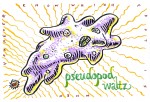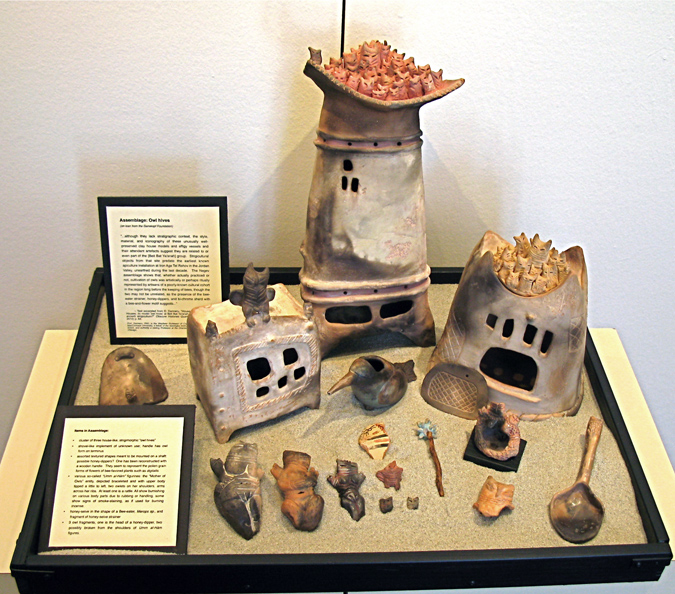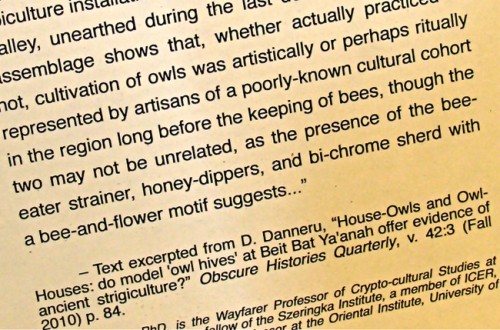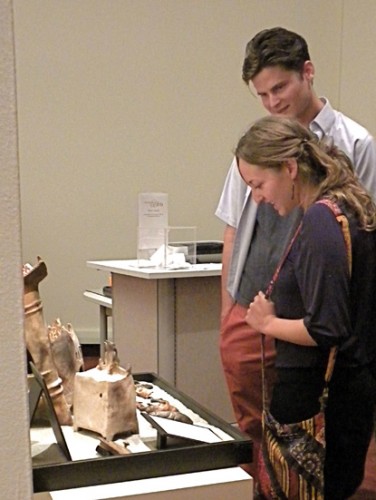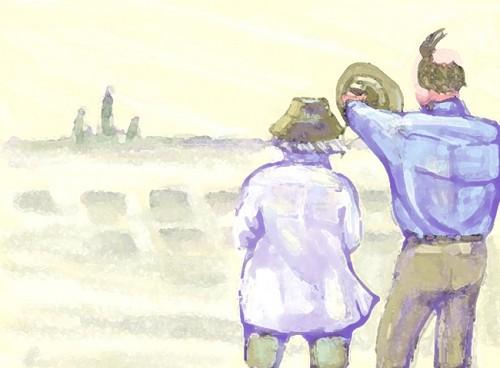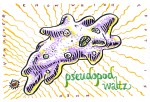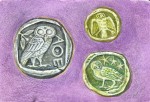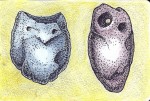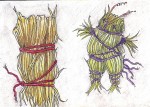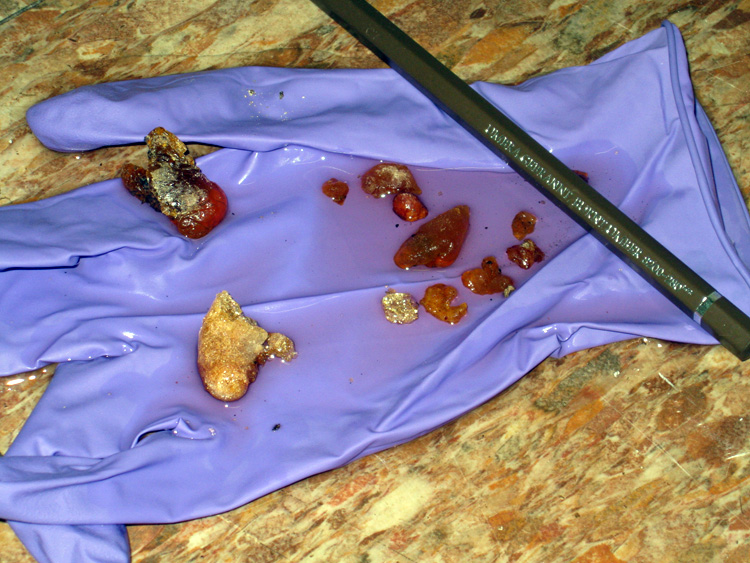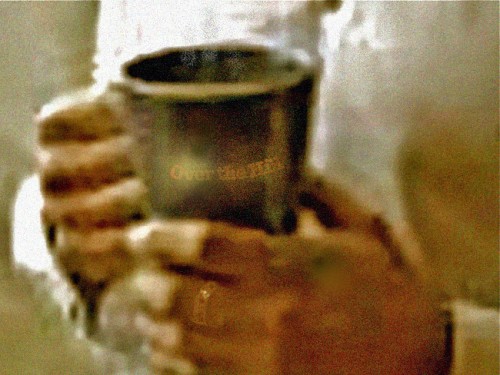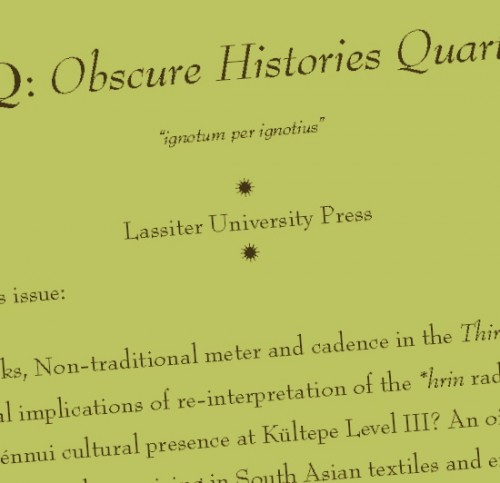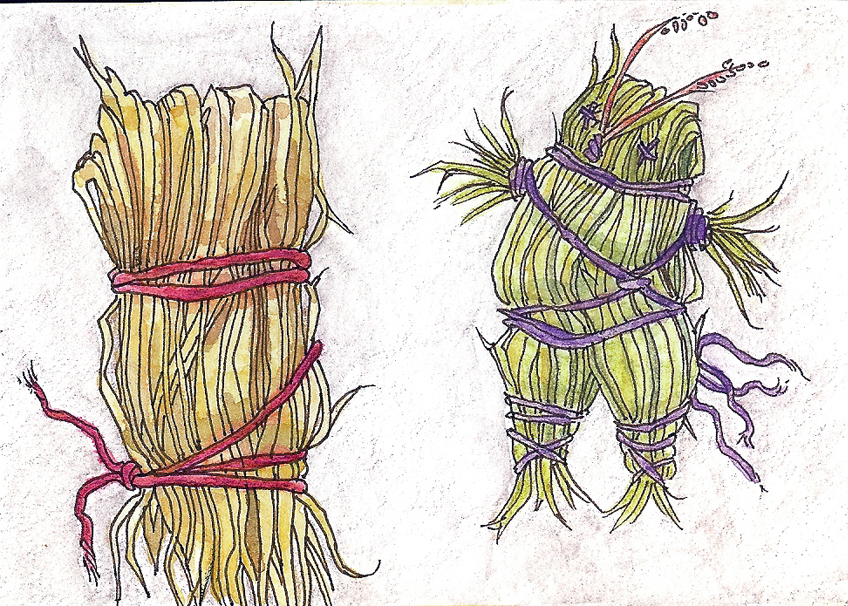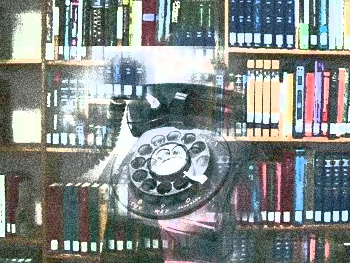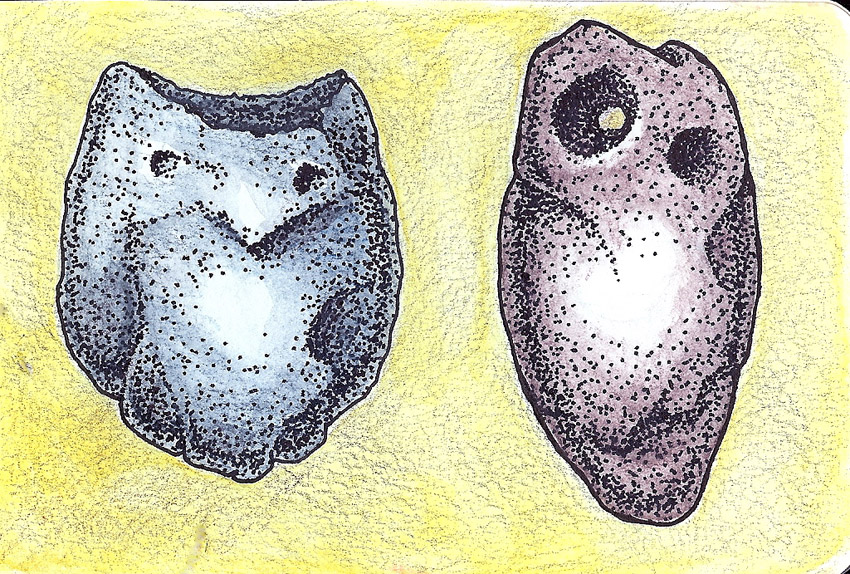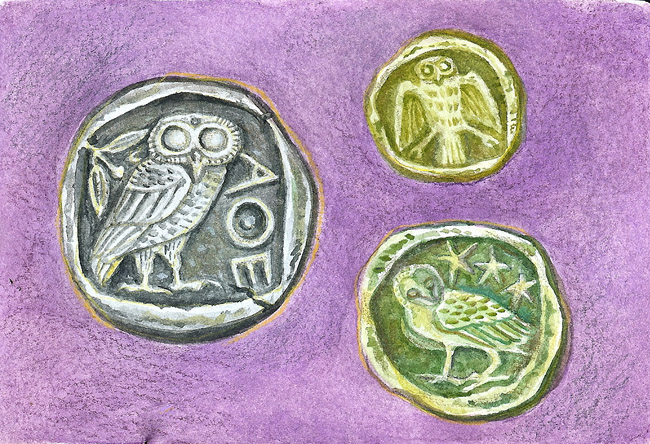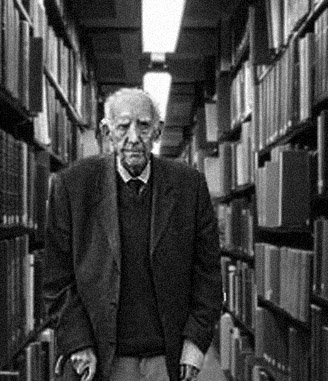What Happened at Beit Bat Ya’anah: part 2
This is the second installment of the series, click on the link at the bottom of this page to continue to the next installment. Or, click here to start reading from the very beginning. Previously:
Wilson A. Rankle waved a hand to indicate they should follow the goat track back down to camp. “Well, it’s almost tea-time,” he said. “Mikka will have put out mits, biscuits and hot water. Oh, there’s coffee too…” “Marvelous,” Professor Wayfarer said, not impressed with the standard options of reconstituted juice or hot drinks. “Lead the way.”
Tea and Announcements
The staff of Beit Bat Ya’anah was clumped along one edge of the dining tarp at the dig camp compound. The sun was low, and there was only a small trapezoid of dirt on the east side of the shelter that wasn’t in the sun. A table for dry biscuits, teabags, instant coffee, cups, and a hot water urn took up the prime part of the trapezoid, and everyone was 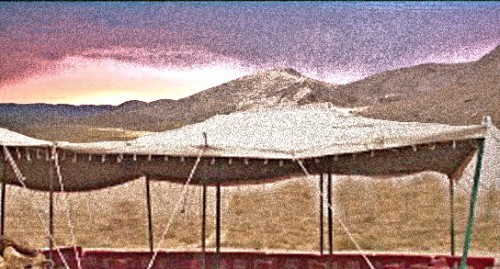 crowded into the remaining geometry of shade around it. Nobody was talking much, except to pass the sugar or powdered milk, or to ask for water to dilute the puckeringly sweet mits fruit juice.
crowded into the remaining geometry of shade around it. Nobody was talking much, except to pass the sugar or powdered milk, or to ask for water to dilute the puckeringly sweet mits fruit juice.
Einer Wayfarer inserted herself among the subdued group, managing to get most of her upper body out of the sun. But her feet, already dusty again from the walk from the shower to her cabin-tent to the tea table, were baking in the late afternoon light. She was still mildly disgruntled from discovering that the showers, an open-air affair on a rough cement slab surrounded by semi-opaque plastic sheeting and inadequately shaded by camo-mesh, were communal, with set times for men and women.
In Wayfarer’s firm opinion, this rustic system wasn’t ideal: the real possibility of getting sunburnt while bathing did not appeal; and the water, heated by the sun all day in exposed plumbing, had been unpleasantly hot. Furthermore, the cracked and pitted cement looked like a prime breeding ground for foot fungus. Still, considering the remoteness of the site, she was pleasantly surprised to find running water at all, and wondered about its source.
Precise enough to note physical discomfort, but too practical to be hampered by it, Wayfarer got on with studying the dig staff. It was apparent that the BGU archæology department didn’t employ local workmen: to judge by the accents she was hearing this was a diverse international bunch: she counted fourteen, mostly Yanks and a few Aussies and Europeans, plus a handful of Israelis. All of the staff she saw were the right age to be grad students or post-docs, except for one precocious American undergrad who must have been deemed sufficiently mature by his advisor to be packed off to help. That meant everyone was working for free, receiving either course credit or resumé-plumping experience in exchange for heavy manual labor, long hours and mediocre food.
She decided that archæology students presented more disreputably than her tidy literary lot back in the states, and that all of the Americans and most of the Aussies were even grungier-looking than the Israelis, if that were possible. Of course, this was to be expected; it was the tail-end of a long, hard season, and everyone looked tired and worn as thin as their grubby tee-shirts.
Wayfarer also noticed that besides herself and the person she assumed was the cook, Mikka, who had startlingly pink hair and a nose stud, there was only one other woman present – young, almost as short as the professor but a good deal slimmer, and who, having grabbed a styrofoam cup of coffee, was headed directly at her.
“Zvi,” the young woman said briefly, then elaborated “Zvia Ben-Tor. You must be Professor Wayfarer. My advisor’s your buddy Ballard Sybar, at Princeton.” She held out a square palm to shake. Everything about her, starting with her name and her haircut, seemed abbreviated.
“Ah, Ballard,” Wayfarer said diplomatically. “We missed him at the ESSA meeting this spring.” This was an outright lie. No one ever missed Sybar — he was a bully and a pain in the ass. Wayfarer thought if this compact young woman could put up with Ballard, she could put up with anything.
“I’m sure you did,” Zvi said, with equal truth and perfect understanding. “By the way,” she added quietly. “The E-word is a four-letter word around here, just so you know.”
Wayfarer, recalling Wilson Rankle’s earlier peevishness, said without lowering her voice, “Yes, I gathered as much. Both directors?”
“Just Dr. Rankle,” Zvi explained. “Amit’s a love-muffin. Not literally,” she added quickly, as Wayfarer’s pale blue eyes latched onto her inquisitively. “I mean, on that topic. Maintains an open mind, at least. He hired me, for example. I’m the only Elennuist on the staff, practically.”
“Practically?” asked Wayfarer; one was either an Elennuist or not.
Zvia opened her mouth, but closed it again, and tilted her head to point. “Oh, here comes Dr. Rankle. It’s afternoon announcement time.”
Wayfarer looked. Wilson A. Rankle was approaching, the comb-over now firmly in place against his pink scalp. He was holding a cold bottle of soda in one hand. No doubt it was from some personal supply; she imagined there might even be a padlock involved. Wayfarer disliked soft drinks, but she disliked self-endowed aristocracy even more.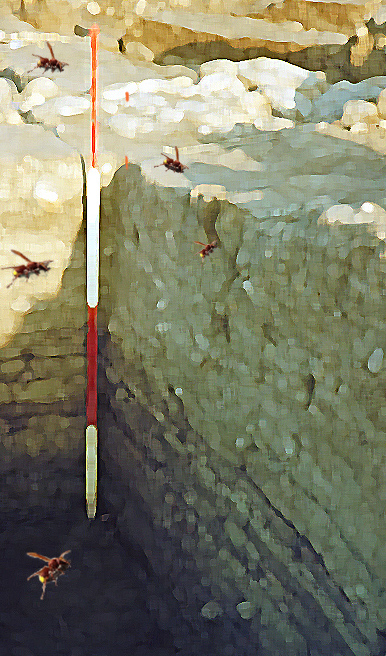
“Good afternoon, people. Ben-Tor, put on some shoes, will you, unless you’re trolling for scorpions?” He opened his mouth to continue, but something caught his eye. “Eric, what’s that mess you’re holding on your neck?”
“Ice,” the sole undergrad explained, “in a baggie. Area D has wasps in the balks again.”
“Are you allergic? No? Well then, I’ll get on with it. Have you all met Dr. Wayfarer? She’s from MacCormack U and is here to look at our supposed Mystery Object in case it’s something special. Please extend her the courtesy of showing her the ropes around camp and in the lab for however long she’s with us. Also, I have a general announcement that I shouldn’t have to make, but since Dr. Wayfarer has just arrived, it’s worth informing her and reminding you all that this late in the season, water is in very short supply, so limit your showers to three minutes and keep them within the afternoon hours, so the pumps have enough time to refill the cistern, otherwise we’ll go dry. Limit clothes-washing to bare necessity, too. What’s so funny, Zohn?” he added wearily, as if engaged in a habitual battle.
The remark was directed at a sturdy staff member with a nimbus of brown hair and a patriarch’s beard. “Just thinking how appropriate the term rank and vile will be,” he joked. Everyone tittered.
“That’s rank and file, Zohn,” the director corrected, as if it were ignorance and not a pun. He went on as if he hadn’t been interrupted. “And, let me remind everyone, once again, that for your own safety the upper wadi is strictly off limits, at any time, but especially after dark. None of you has any reason… any reason to be up there. At all. And I mean none of…” he looked around and demanded, “where’s Dario?”
No one said anything.
Rankle finished up abruptly, “Well, I think I’ve made myself clear. That’s all.”
He turned to Einer Wayfarer. “There’s half an hour until dinner. Would you like to see the object now?”
Half an hour? Half an hour? She’d come half-way around the world on short notice and she was being offered half an hour of face time with the mystery object? Not damn likely. Wayfarer settled her dense body weightily onto a bench and folded her short-fingered hands firmly around her styrofoam cup.
“Thanks, Wilson,” she said, “but it can wait until after dinner, I think. I’d like to chat with your staff.”
To be continued…
To read Part 3 “Wayfarer’s Explanation”, click here.
(This series is a prequel to the eight-part “Ganskopf Incident”, click here to read the Ganskopf Incident; earliest posts are at the bottom; scroll down to start there.)

